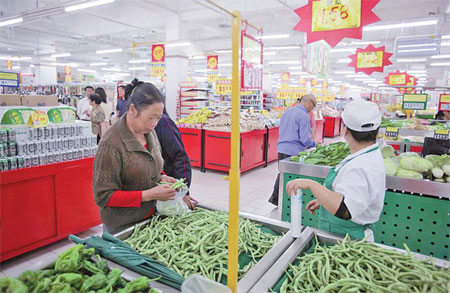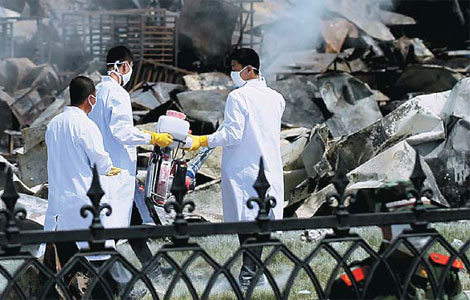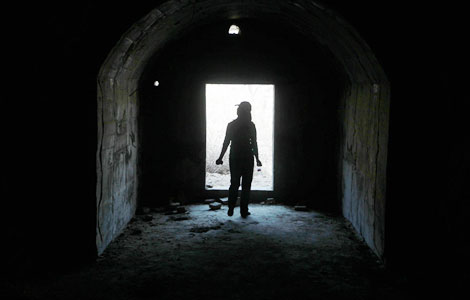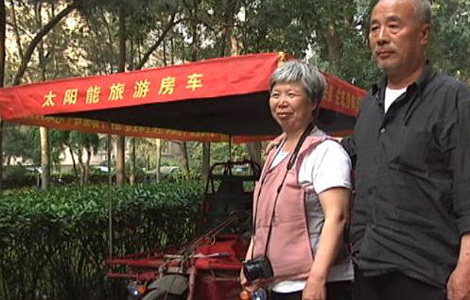Showtime for modern Chongqing
Updated: 2013-06-07 07:29
(China Daily)
|
|||||||||||
Seeking a breakthrough
The entrance to Liangjiang's government building features a statue of a horse within a gate, a symbol of the Chinese character chuang, which means "to seek a breakthrough".
It has taken courage and a creative approach by the decision-makers to find a way out for the inland city, but they seem to have found one - the Chongqing-Xinjiang-Europe International Railway.
 |
| Zhang Junbi, 65, in her new home in Minxinjiayuan community in Chongqing. |
The 11,000-km route between Asia and Europe, known as "the modern Silk Road", began operations in 2011. Starting in Chongqing, the railway travels through Russia, Belarus and Poland before arriving at Duisburg in Germany.
The journey takes an average of 16 days, less than half the time of the sea-going route, and is changing Chongqing's role from that of an inland city to that of a bridgehead for China's gateway to the West. In addition, customs and tariff procedures have been simplified to make international trade more convenient.
In 2011, trains ran just once a month. Now they run every day and the number of departures is expected to rise to three per day by 2015.
"The consuming power of the western regions is still relatively low compared with that of the coastal provinces, therefore development still relies on external demand," Tang said, adding that the railway was a major contributor to the tripling of foreign trade volume in 2012.
But while shipping laptops and other products to the European market, the railway still has to deal with relatively high freight costs, as there are few China-bound goods. However, Tang is confident the situation will improve as China adopts more measures to boost domestic consumption.
"Medical equipment, spare parts for high-end automobiles and luxury goods are the things all European countries are looking to export to China.
"Initially, the railway will certainly receive government subsidies, but they will not be necessary once the transport volume increases," said Tang.
The cost of each wagon to Europe is $8,000, but Tang said the figure is expected to fall to around $5,000 to $6,000.
To facilitate trade with Europe, the Liangjiang area is building a logistics center and an e-commerce center to better serve transnational trade. In early May, three logistics companies from the US, Italy and Australia invested 5.4 billion yuan ($880 million) in Liangjiang to tap the potential opportunities.
Tang said the United Kingdom has come up with a plan to extend the railway to Britain, while several Eastern European and Central Asian cities have also expressed a willingness to establish freight terminals along the line.
"Every country would like to have its name on the list," he said.
 |
| Residents of Hehe community shop in a newly opened supermarket in the neighborhood. |
Today's Top News
China's economy might be No 1 in 2030
355,000 parents have lost only children
Russian President Putin, wife announce divorce
Xi: Strengthen trade links with Mexico
Top global enterprises welcomed
Gold miners held in Ghana
China, Vietnam set up naval hotline
More students looking overseas
Hot Topics
Lunar probe , China growth forecasts, Emission rules get tougher, China seen through 'colored lens', International board,
Editor's Picks

|

|

|

|

|

|





